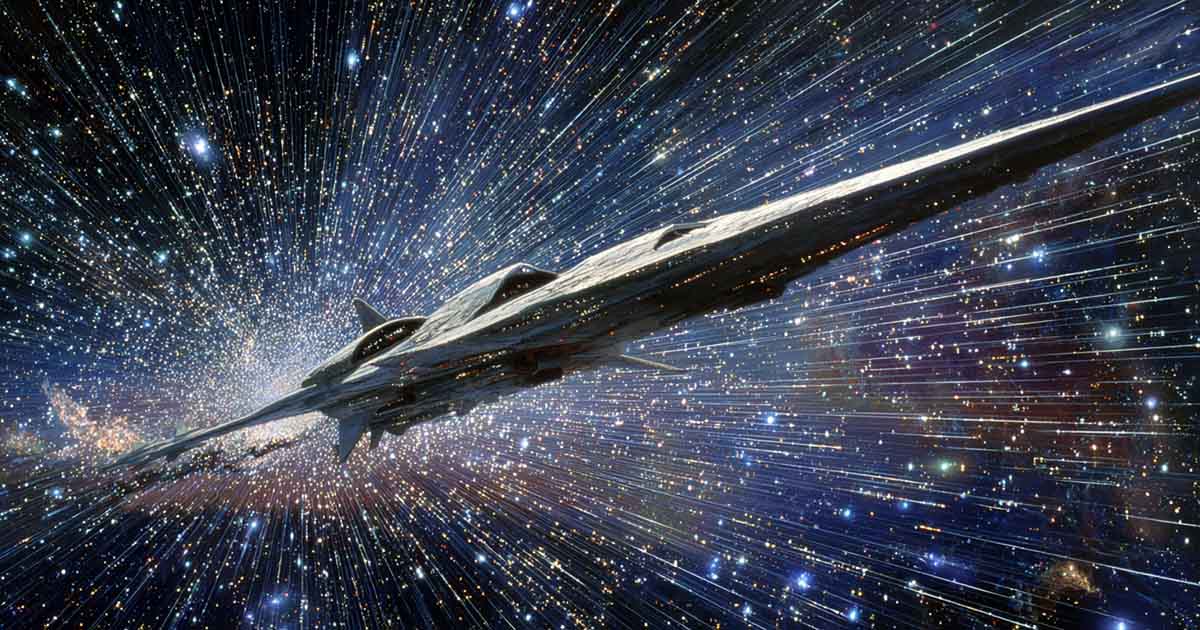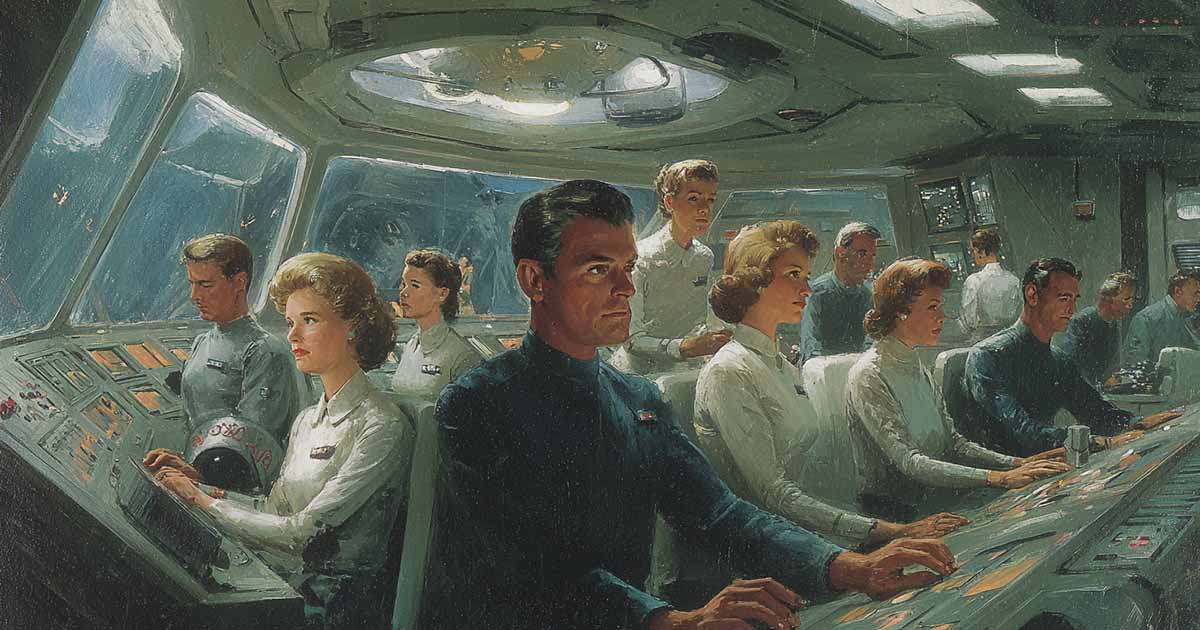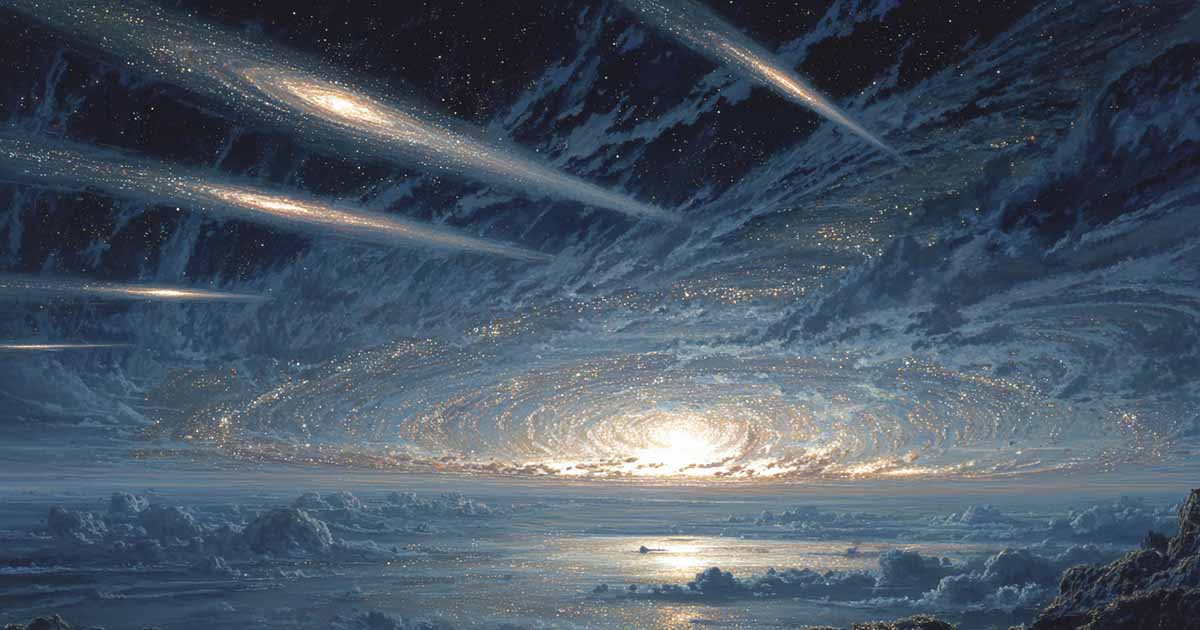"Tau Zero" and the Legacy of Classic Science Fiction
A review of Poul Anderson’s "Tau Zero," the 1970 classic of hard science fiction that blends rigorous physics with a sweeping meditation on courage, duty, and mankind’s place in the cosmos.

The Promise of Hard Science Fiction
When Poul Anderson published "Tau Zero" in 1970, the science fiction field was undergoing a period of upheaval. The so-called New Wave was in full swing, with many writers turning toward experimental styles, surreal imagery, and explorations of inner space rather than outer.
Anderson, however, charted a different course. He reached back to the rigorous tradition of hard science fiction, the kind that builds a story on the solid foundations of physics and mathematics, then asks how real men and women would respond when those principles become destiny.
"Tau Zero" is a novel of enormous ambition. On the surface, it is the story of a starship crew bound for a distant world. Beneath that, it is a meditation on time, mortality, and the resilience of the human spirit when measured against the cold laws of relativity.
Anderson does not indulge in ornate language or baroque description. Instead, he writes with the directness of an engineer and the clarity of a teacher, translating Einstein’s equations into narrative stakes that any reader can grasp.
More than fifty years later, the book continues to command respect. It is demanding, yes—its pages are filled with technical explanation, and its characters sometimes serve as spokesmen for ideas rather than fully fleshed portraits—but the reward is a sense of cosmic grandeur that few other novels have achieved.
In an age where science fiction often favors spectacle or whimsy, "Tau Zero" remains a stern reminder of what happens when an author weds scientific rigor to imaginative scope. It offers not just entertainment, but the rare experience of awe.
The Story Setup Without Spoilers
The heart of "Tau Zero" lies in a voyage across interstellar space. The starship Leonora Christine, equipped with a Bussard ramjet drive, sets out with fifty carefully chosen men and women to establish a colony among the stars.

On the surface, this is a classic science fiction premise. A crew departs Earth, leaving behind the old world to strike out into the unknown. Yet Anderson approaches the idea with a sharp eye for scientific plausibility. He is not content to wave away the details. Instead, he asks what happens when the cold mathematics of relativity are not just a background decoration but the engine of the plot itself.
The key concept is tau (τ), the symbol physicists use to measure time contraction at relativistic speeds. For the crew inside the Leonora Christine, life passes at a steady pace. But as the ship accelerates closer to the speed of light, entire years—and later centuries—pass for the universe outside.
Anderson builds this effect carefully, step by step, so the reader feels the weight of the ship’s momentum. What begins as a technical challenge soon becomes a moral and emotional trial, as the crew must live with the consequences of traveling farther and faster than any men before them.
This setup allows Anderson to weave together two levels of drama. On a human scale, frictions, friendships, and responsibilities naturally arise when fifty individuals are sealed inside a steel cylinder for years at a time. On the cosmic scale, the grandeur of relativity shows itself in time slipping away, space unfolding, and mankind’s fragile hopes balanced against the sheer momentum of the universe. Without giving away more, it can be said that the ship’s journey becomes not just a test of technology, but a test of humanity itself.
Themes and Ideas
What gives "Tau Zero" its enduring power is not simply the machinery of its plot, but the weight of the themes Anderson threads through it. The book is hard science fiction of the most uncompromising kind, yet it is also a meditation on man’s courage, duty, and endurance in the face of forces that dwarf him.

The first theme is human resilience. The crew of the Leonora Christine confronts circumstances dictated by physics, not by politics or chance. There is no villain to defeat, no empire to overthrow, only the laws of the universe itself.
Anderson asks whether men and women can endure when stripped of illusions, facing a reality that cannot be argued with. Their struggles, both personal and collective, reflect the timeless truth that courage is measured not by victory, but by persistence.
Another theme is the tension between the intimate and the infinite. On one hand, there are the small frictions of daily life—love, quarrels, duty, and pride. On the other, there is the vast sweep of cosmic time.
Anderson juxtaposes these scales with deliberate care. The reader is never allowed to forget that while the crew argues, laughs, and mourns, the stars themselves are shifting, and the universe is changing around them. The effect is humbling, a reminder of man’s smallness and yet his remarkable will to persevere.
A further theme is time and renewal. Physics is not treated as a cold abstraction but as a stage on which mankind’s oldest questions play out. What does it mean to live with time slipping past so quickly that whole civilizations outside the ship rise and fall in what feels like days?
What does it mean to be faithful to one’s mission when the context of that mission may be lost forever? Anderson offers no easy answers, but he places the questions firmly before the reader.
In this way, "Tau Zero" belongs to the lineage of cosmic science fiction, a tradition that stretches back to Olaf Stapledon’s "Star Maker" and finds kinship in Arthur C. Clarke’s "The City and the Stars."
Like those works, it dares to frame man’s story against the sweep of creation itself. Yet Anderson is more practical than Stapledon and more grounded than Clarke. He keeps one foot in the laboratory while reaching toward the stars, a balance that defines his unique voice.
Style, Strengths, and Weaknesses
Anderson writes with a style that is plainspoken and disciplined. He avoids ornament and lyrical excess, preferring the clipped, pragmatic sentences of a man explaining machinery.
This makes sense because his real subject is machinery of the most profound sort, relativity itself and the clockwork of the universe. Readers who want poetic flourishes may be disappointed, but those who appreciate clarity will find it satisfying.
The greatest strength of "Tau Zero" is its scientific rigor. Anderson does not treat physics as window dressing. Instead, he makes it the motor of his story. Every turn of the plot arises from real equations that he translates into dramatic terms. This is what places the novel firmly in the hard science fiction tradition. Readers come away not just entertained but educated, with a sharper grasp of what it means to travel near the speed of light.
Another strength lies in the sense of grandeur the novel conveys. Few works of fiction dare to measure man’s struggle against cosmic time itself. Anderson is not content with a tale of survival in deep space.
He expands the horizon until it dwarfs ordinary adventure and shows how a handful of men and women must reckon with forces as large as creation. That ambition alone secures the book’s place among the landmarks of the genre.
The weaknesses of the book are just as clear. Anderson’s characters sometimes feel more like spokesmen for ideas than living people. Their quarrels and romances are sketched in, but they rarely rise to the depth one finds in novels more interested in psychology. For some readers, the human drama will seem thin when compared with the cosmic spectacle.
Another limitation is pacing. The passages where Anderson explains his physics are precise, but they can also feel heavy. Readers who are not comfortable with equations and scientific explanation may find themselves slowing down or even skipping ahead. In this respect, the novel demands patience.
These flaws do not cancel out the book’s power. Instead, they reveal Anderson’s priorities. He set out to write a novel where the science itself would drive the story, and he succeeded.
In doing so, he created a work that is more than entertainment. It is a lesson in humility, showing how small man is and how great his endurance can be.
Why "Tau Zero" Endures
"Tau Zero" is more than a novel about a starship and its crew. It is a work that dares to stretch human imagination across the scales of time and creation.
Anderson built his story on equations, but what he left his readers with is awe. That combination of scientific rigor and cosmic vision is what has kept the book alive for more than half a century.
The weaknesses in style and characterization are real, yet they pale beside the scope of what Anderson achieved. He gave readers a lesson in humility and courage at the same time.
The men and women aboard the Leonora Christine may not be drawn with the subtlety of a literary novel, but their ordeal embodies qualities that matter.
Persistence, loyalty, and the refusal to yield in the face of the unknown remain at the center of the book. These are not just science fiction virtues. They are human virtues.
For readers who enjoy classic science fiction, "Tau Zero" offers more than adventure. It offers perspective. It shows how mankind, though small in measure against the cosmos, can still carry himself with dignity and resolve. That message is as relevant today as it was in 1970, perhaps even more so.
The book is not easy reading, but it rewards the effort. Anderson challenges his readers to think, to feel, and to face the immensity of creation without flinching.
Few novels of any kind have attempted so much, and fewer still have succeeded. "Tau Zero" remains one of those rare works that leave a reader humbled and inspired, grateful for the reminder that man’s spirit can outlast even the stars.

